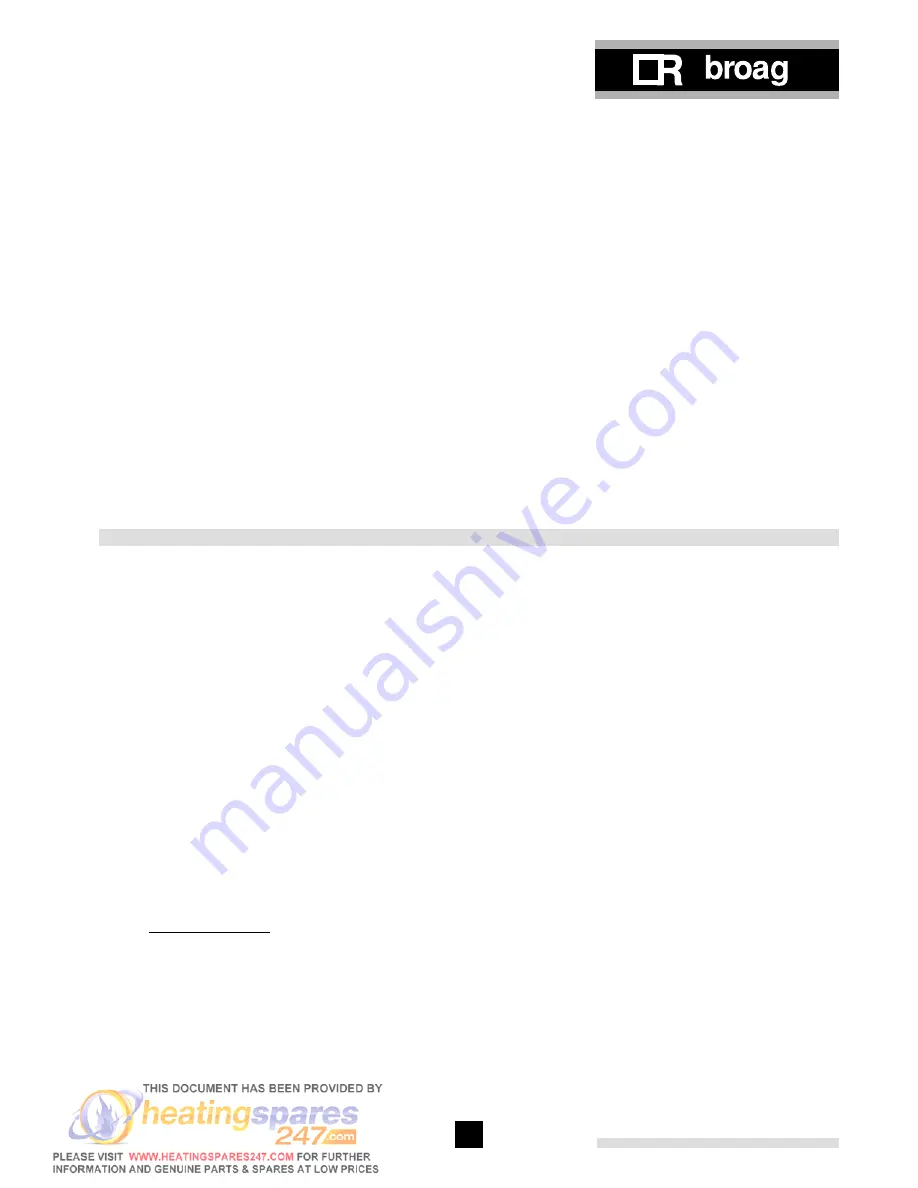
5
3.3 Quotation
specifications
General specifications:
- Heat exchanger manufactured from corrosion resist-
ant “pearlite” cast iron
- Maximum operating pressure of 6 bar
- Maximum operating temperature of 95°C
- Electronic ignition as standard
- High/low operation as standard
- Reduced
NO
X
burners (CE class 2)
- Built in draft diverter
- Supplied in broken down form, the models 4-6 sec-
tions can also be delivered pre-assembled
- Powder coated enamel steel casing
- 80 mm thick glass wool insulation
- Suitable for use with a Natural gas (propane available
as an option)
- Minimum return water temperature 20°C
- Supplied as standard with on/off switch, temperature
indication, control and high limit thermostats
- Efficiency 81.5% (GVC)
- Manufactured to ISO 9001
- CE
approved
Optional:
- Hours run meters
- BMS contacts for remote indication
- Water pressure switch
- Down draught thermostat
-
rematic
®
control.
4 APPLICATION
INFORMATION
4.1 L.P.H.W.
system
4.1.1 Water temperature
Maximum water temperature is 110°C (high limit ther-
mostat).
Highest operating boiler water temperature is 95°C (con-
trol thermostat).
Minimum return water temperature is 20°C at a flow rate
related to a
∆
t of 20°C (flow/return temp).
4.1.2 Water pressure
Boiler sections are factory pressure tested to 10 bar.
Maximum pressure test boiler block is 8 bar.
Maximum working pressure is 6 bar.
Minimum working pressure is 0.8 (sealed system) or 0.3
(open vented).
4.1.3 Water flow
The minimum water flow through the boiler on shut
down is:
Output boiler in kW = m
3
/h
93
This minimum flow must be maintained for approximate-
ly 5 minutes after the burner stops firing to avoid high
temperature shut down due to residual heat gain. Due
to the design and manufacture of the boiler no specific
minimum water flow requirements exist other then for
overheating protection.
4.1.4 Water treatment
The system should be filled with mains cold water (for
the UK this will usually have a pH of between 7 and 8).
Pressurised installations with a boiler/system content
ratio of 1:10 or less should not require water treatment,
provided that the following conditions apply:
1. The system is flushed thoroughly to remove all
fluxes and debris and then filled completely once.
2. Make up water is limited to 5 % per annum.
3. The hardness of the water does not exceed 360
ppm (20°D).
All scale deposits will reduce the efficiency of the boiler
and should be prevented. However provided the above
is complied with any scale produced will not be too detri-
mental to the boiler efficiency and will not reduce the
anticipated life expectancy of the boiler.
NOTE:
Scale deposits in excess of 3 to 5 mm will
reduce boiler efficiency and greatly increase the risk of
premature casting failure.
As most systems contain a variety of metals which can
react with each other to cause corrosion. It is considered
good practice to provide some form of water treatment
(especially in open vented systems) in order to prevent
or reduce the following:
- Metallic
corrosion;
-
Formation of scale and sludge;
- Microbiological
contamination;
-
Chemical changes in the untreated system water.


































